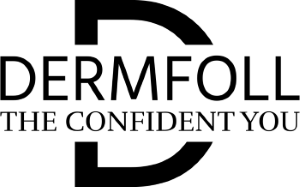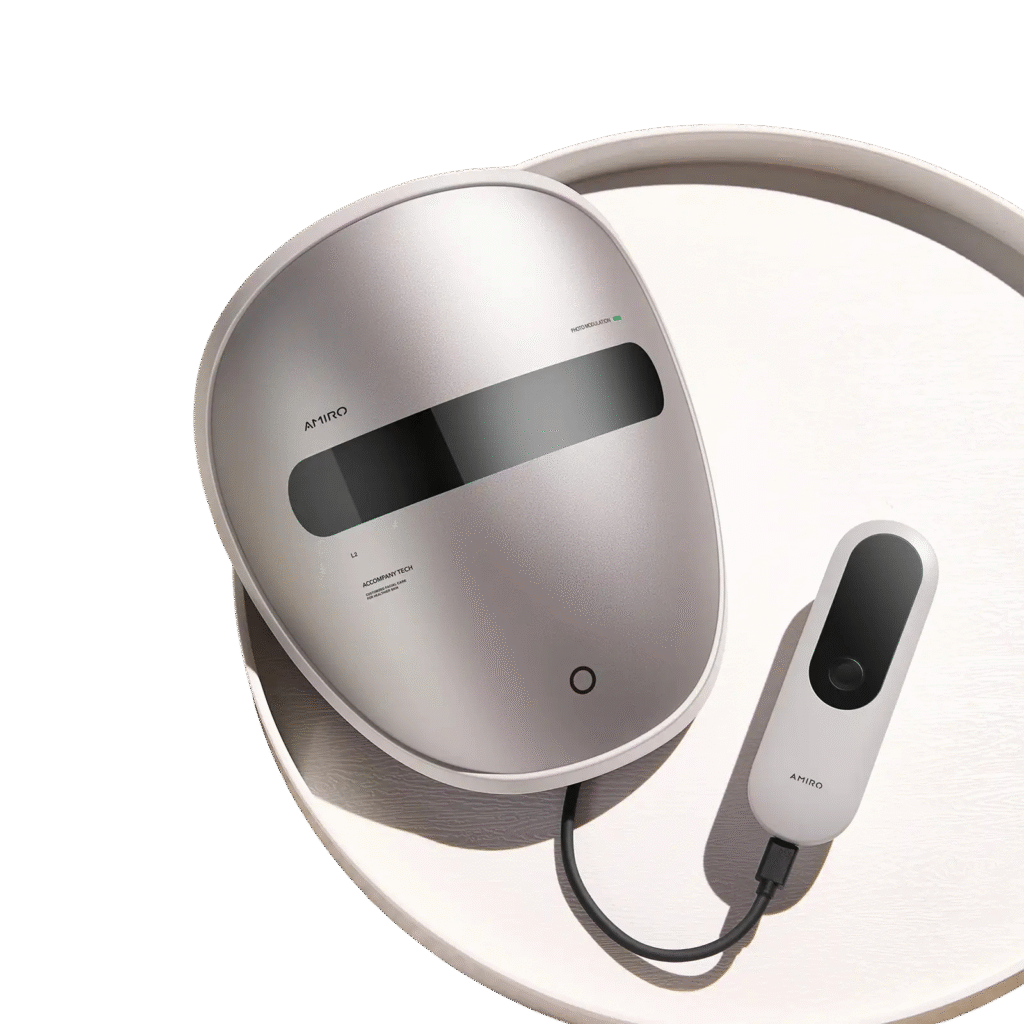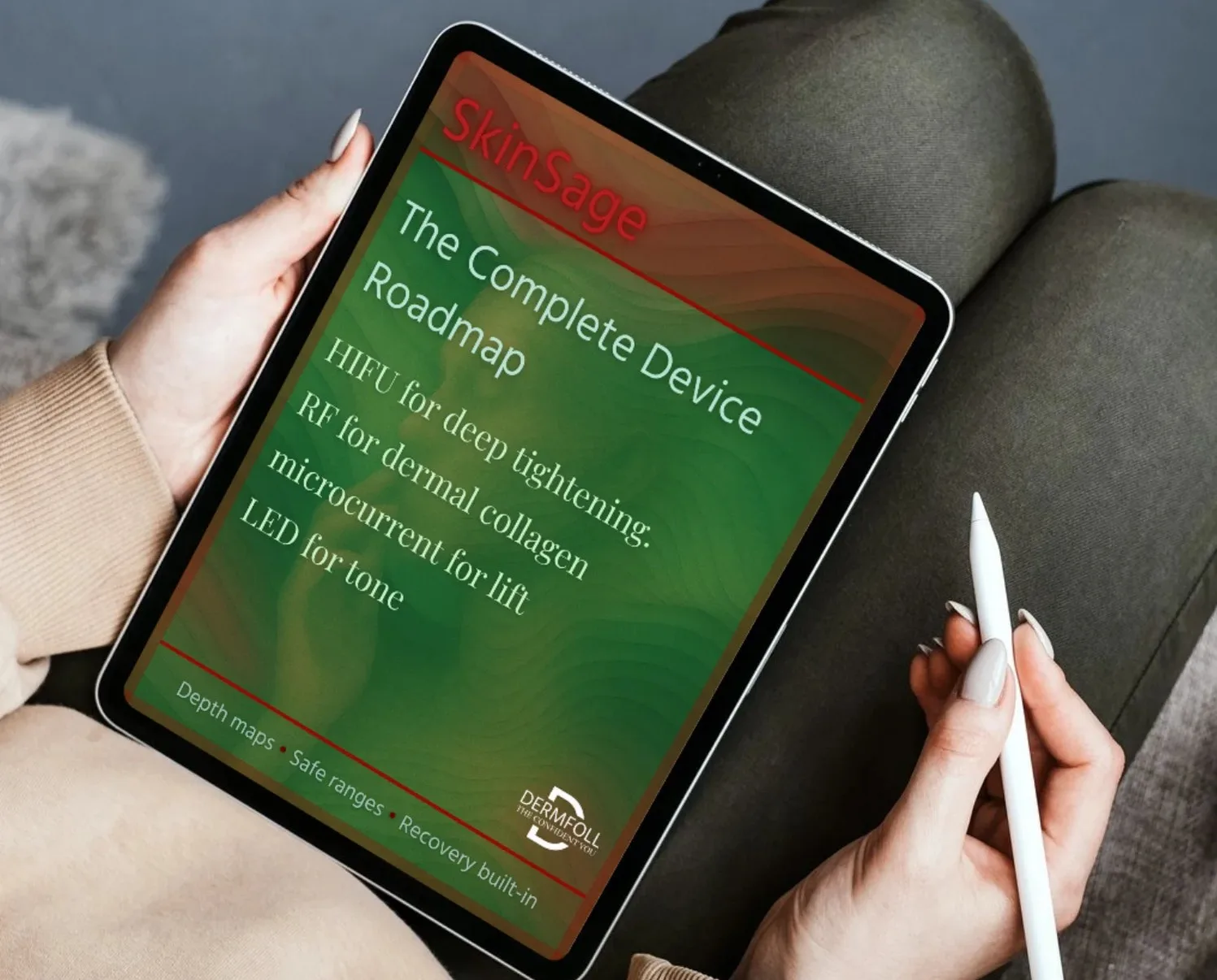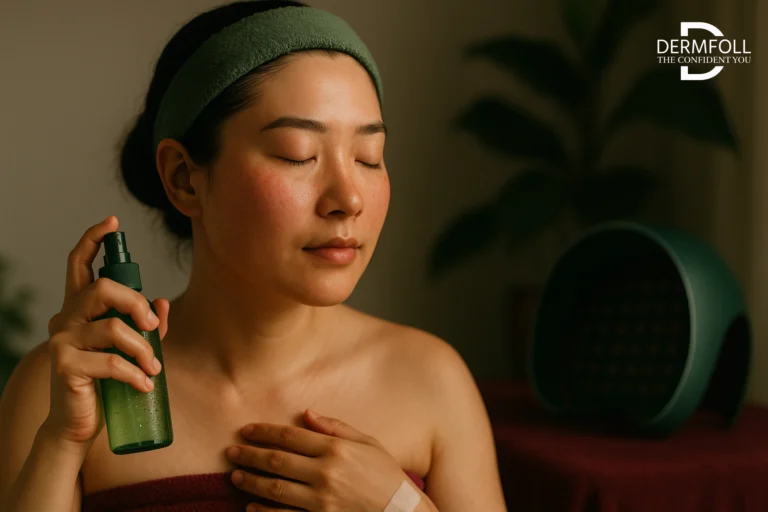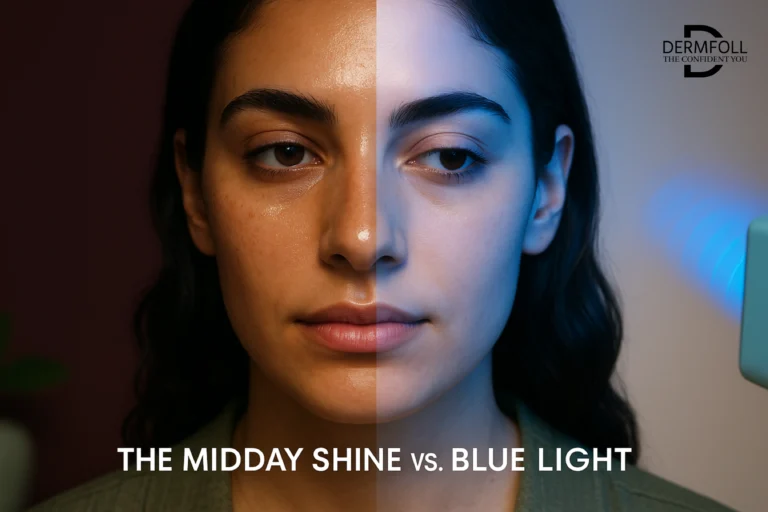Blue Light Therapy Myths: What to Believe, What to Skip
LED light therapy facial machines are everywhere right now. And with that popularity comes a swirl of half-truths, skincare gossip, and… let’s call them “creative” TikTok takes.
So let’s sit down together and break down what’s real, what’s overhyped, and how to use blue light therapy wisely and safely, no matter your skin tone or skin type.
Blue Light Therapy: What Does It Do?
First, let’s answer the big one:
“Okay, but… blue light therapy – what does it do, exactly?”
Here’s the short version: blue light (typically in the 415–470 nm range) interacts with compounds called porphyrins.
Which are naturally made by acne-causing bacteria. When these porphyrins absorb blue light, they trigger a burst of activity that kills the bacteria.
The term for this is photobiomodulation – but don’t let the name scare you. It’s basically your skin’s way of reacting to light in a positive, controlled way.
Think of it as giving your skin a gentle, corrective nudge instead of a harsh shove.
“Blue light induces reactive oxygen species through porphyrin activation, leading to bacterial death and a visible reduction in inflammatory lesions,” reports Goldman et al. (2021).
So if you’re struggling with breakouts, oiliness, or that shiny T-zone situation, blue light therapy can genuinely help. And the best part? It’s non-invasive and safe when done right.
But, and it’s an important but…
More Isn’t Better: Why Overuse Can Backfire on Your Skin
I know it’s tempting to think, “If a little blue light is good, then more must be better, right?”
Not quite.
There’s something called a biphasic dose response, which basically means your skin responds best to the right amount of light, not too little, and definitely not too much.
If you overdo it, say, using your LED light therapy facial machine daily for extended periods, you could end up drying out your skin, irritating your barrier, or even delaying healing from existing breakouts.
“Overexposure to therapeutic light may disrupt epidermal recovery and increase post-treatment sensitivity,” notes the clinical findings by Goldman et al. (2021).
So yes, is LED light safe? Absolutely, but like most good things, it needs to be used with intention and moderation.
Stick to what your dermatologist or device instructions recommend, usually 2 to 3 times a week is plenty for home devices.
Multi-Light Masks: Are Combo Devices Better or Just Flashier?
Okay, now let’s talk about those rainbow-hued LED masks you’ve seen on Instagram. You know the ones, red, blue, green, purple, disco ball-level lights.
But here’s the truth: not all light colors are created equal.
Red and near-infrared light are amazing for supporting collagen and calming inflammation, but only if your device actually reaches the therapeutic wavelengths.
That’s the difference between real results and expensive mood lighting.
“Only LED devices emitting verified therapeutic wavelengths between 415–630 nm demonstrated clinical efficacy in published trials,” Goldman et al. (2021) reminds us.
So before you splurge, check the specs. Ask:
- Does it list the exact nanometer range?
- Does it include FDA clearance or clinical backing?
- Are there real before-and-after photos, not filters?
If your device delivers legit blue and red light at effective power levels, it’s a great tool. But if it’s just lighting up like a futuristic Halloween mask, maybe pass.
🔶 Clear Breakouts Safely with Precision Blue Light
CELLRETURN Platinum LED Mask
Medical-grade blue light kills acne bacteria and reduces inflammation fast.
AMIRO Spectra 5-in-1 LED Mask
Clinically optimized blue and red LEDs calm flare-ups while balancing oil.
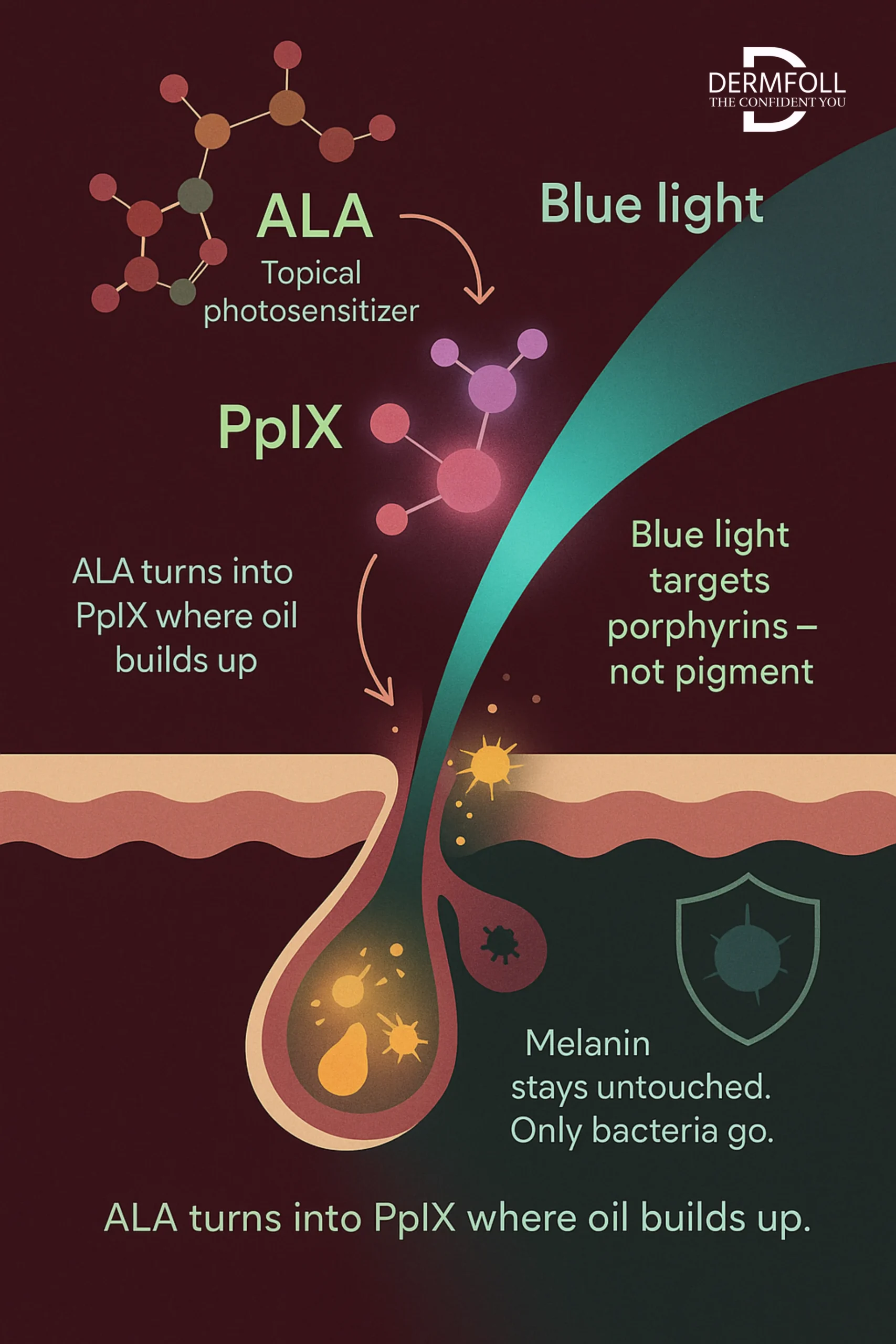
Blue Light Therapy: Smart Use Starts with Smarter Questions
Just because a skincare device lights up like a spaceship doesn’t mean it’s doing anything meaningful for your skin.
And when it comes to LED light therapy facial machines, the labels and numbers can feel like a foreign language.
So before you drop your hard-earned dollars, or your face, under a glowing panel, let’s talk about what really matters when choosing or using blue light therapy.
Sorting Science from Hype: How to Vet Blue Light Claims
You’ve seen it before: “FDA-cleared!” “Clinically proven!” “Dermatologist-approved!”
But what does that really mean?
Here’s the truth: FDA clearance simply means a device is considered safe to use, not that it actually works for your specific concern. That’s why looking at the device specs matters so much.
Here’s what to check before investing in any LED light therapy facial machine specificaly for Achne and oil treatments:
- Wavelengths: For blue light, the sweet spot is between 415–470 nanometers. If a device doesn’t clearly list this, it’s a red flag.
- Irradiance (light intensity): This tells you how much energy your skin is actually getting. Too little and it’s just a light show. Too much, and you risk irritation.
- Clinical studies: Look for real-world results published in peer-reviewed journals, not just influencer posts or brand-sponsored blurbs.
“Devices used in clinical trials consistently reported therapeutic wavelengths and irradiance levels, providing standardized treatment parameters for efficacy,” noted Goldman et al. (2021).
Bottom line? Ask questions. If a product dodges specs or relies solely on buzzwords, it might not be worth your skin – or your money.
Blue Light Therapy Eye Damage: Should You Be Worried?
This is one of those questions I wish more people asked upfront:
“Can these lights actually harm my eyes?”
It’s a valid concern. Because while blue light can be gentle on the skin, your eyes are another story.
Extended or direct exposure, especially from high-output panels or full-face masks, can pose risks if your eyes aren’t properly protected.
This is especially true for shorter-wavelength blue light, which penetrates more deeply and is known to contribute to retinal stress with repeated unshielded use.
“Ocular protection, such as goggles or auto-shutoff features, is recommended for all PDT sessions, particularly with high-intensity or close-proximity devices,” advises Goldman et al. (2021).
So, how do you protect yourself?
- If your mask comes with built-in eye shields, great.
- No shields? Use wraparound goggles during each session.
- Look for devices with auto shutoff if they detect movement near the eyes.
Your eyes are delicate. Don’t skip the basics just because a treatment feels low-risk. Safety isn’t optional, it’s part of the glow-up.
🔶 Dermatologist-Level LED Care, Now in Your Home
CELLRETURN Platinum LED Mask
FDA-cleared wavelengths deliver safe, effective acne treatment without skin irritation.
AMIRO Spectra 5-in-1 LED Mask
Combines five therapeutic light modes for customizable, barrier-friendly skin recovery.
CONCLUSION
When it comes to LED light therapy facial machines, the glow-up starts with clarity, not color cycles.
Here’s what we’ve really learned:
- 💡 Blue light therapy – what does it do? It targets acne-triggering bacteria via porphyrins, not your pigment, not your collagen.
- ⚖️ Is LED light safe? Yes – when used with care. Overdoing it or skipping protective steps (especially for your eyes) can backfire.
- 🧠 Not all LED masks are equal. Specs matter: if it doesn’t list the nanometer range, or uses the term “FDA-cleared” without substance, ask more questions.
- 👁️ Blue light therapy eye damage is real only if you ignore safeguards. Use goggles or rely on built-in eye shields. Your skin loves the glow; your retinas don’t.
- 🚦 And yes – when it comes to blue light, more isn’t always better. It’s about smart rhythms, barrier support, and choosing evidence over intensity.
What’s the throughline? Blue light works. But only when we let the science, not the sparkle, guide us.
Next Up: Blue Light vs. Actinic Keratosis – Does It Really Work?
You’ve heard the claims, maybe even seen it in clinic menus: blue light therapy for precancerous skin lesions. But how well does it really work on actinic keratosis? And is it worth the downtime?
In our next post, we unpack the clinical evidence behind blue light PDT for AK, explore how ALA fits in, and break down what to expect if your derm suggests it. Spoiler: it’s more science, less guesswork.
